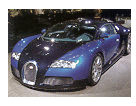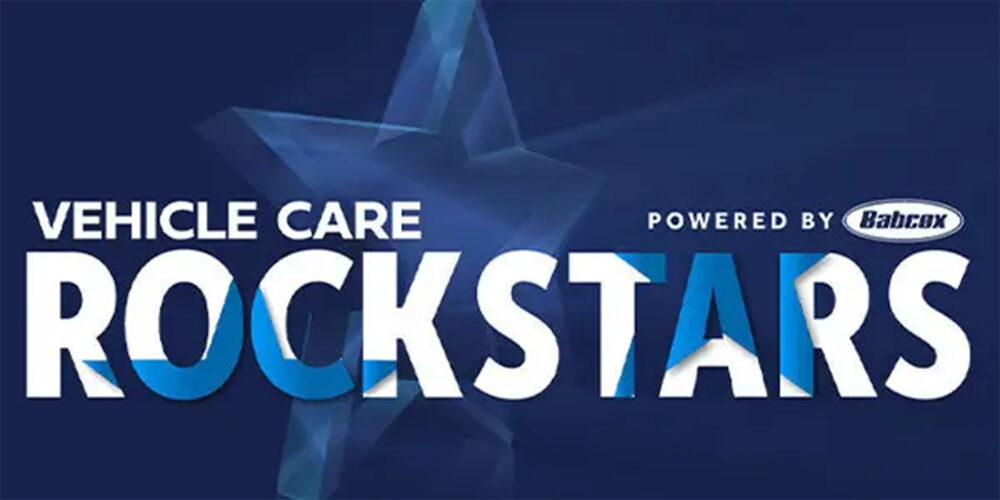The Return of the Mustang Pedal Car
 It wasn’t long after Henry Ford began mass-producing Model Ts at the turn of the century that kids took to sidewalks in miniature pedal cars. The steel-covered toys remained high on children’s wish-lists until the ’70s when the company stopped producing them.
It wasn’t long after Henry Ford began mass-producing Model Ts at the turn of the century that kids took to sidewalks in miniature pedal cars. The steel-covered toys remained high on children’s wish-lists until the ’70s when the company stopped producing them.
Just as the 1965 Mustang was a runaway hit, so was its counterpart pedal car, selling more than 93,000 units by Christmas of its first year in production.
After a more than 30-year hiatus, the Mustang Pedal Car is again available – exactly the same with all-steel construction, adjustable rubber pedals, a clear windshield and authentic Mustang markings (despite a few modifications for contemporary safety standards). While the original pedal car retailed for $25, today’s price is $250.
For information on the Mustang Pedal Car, go to www.Fordcollection.com.
Source: Ford Motor Co.
Book Report
 In his book LEGENDARY CARS: Cars that Made History from the Early Days to the 21st Century, author Larry Edsall shines a much-deserved spotlight on the world’s most inspired, innovative and influential car designs.
In his book LEGENDARY CARS: Cars that Made History from the Early Days to the 21st Century, author Larry Edsall shines a much-deserved spotlight on the world’s most inspired, innovative and influential car designs.
This handsome volume chronicles the history of the automobile from the earliest Tin Lizzies to such automotive achievements as the Alfa Romeo, Porsche, Ferrari, Jaguar and Corvette to cars of the future. Edsall, a longtime writer for AutoWeek magazine, brings to life the ingenuity, passion and technological advances that went into the creation of each vehicle. Throughout the book, hundreds of photographs showcase each car in full, gleaming detail, supplemented by archival photographs and reproductions of car advertisements.
From dream cars to road cars, LEGENDARY CARS conveys the thrill of both designing and driving these exceptional automobiles. As compelling a read as it is a feast for the eyes, this book is filled with a sense of adventure and excitement as it takes readers on an unforgettable spin through popular culture and into the future of automobiles. This book is one that needs to be added to any automotive enthusiast’s library.
Book Notes:
ISBN 88-544-0081-5
Author: Larry Edsall
Hardcover, 288 pages with 400 color photographs
Publisher: White Star Publishers
Price: $39.95, available through bookstores
Distributed though Random House 800-733-3000
The Automobile (Technically) Turns 120
 On January 29, the automobile celebrated its 120th birthday. On that date in 1886, Karl Benz applied for a patent for his “vehicle with gas engine operation.” Patent DRP 37435 for the Benz Patent Motor Car was granted in November of that same year, making it the “birth certificate of the automobile.”
On January 29, the automobile celebrated its 120th birthday. On that date in 1886, Karl Benz applied for a patent for his “vehicle with gas engine operation.” Patent DRP 37435 for the Benz Patent Motor Car was granted in November of that same year, making it the “birth certificate of the automobile.”
In later years, the Benz organization and the company formed by fellow automotive pioneer Gottlieb Daimler would merge to form Daimler-Benz. Karl Benz is, therefore, credited as co-founder not only of Mercedes-Benz but also the automotive industry itself.
Seven months after Benz filed his patent for the automobile, Daimler, with his master engineer Wilhelm Maybach, attached his Daimler engine to a four-wheeled coach producing the first “horseless” carriage. Following Daimler’s death in 1900, his largest distributor, Emil Jellinek, asked Maybach to design a car more advanced than any other. The vehicle, named for Jellinek’s daughter, Mercedes, resulted in the Mercedes of 1901, which defined the car as we essentially know it today.
Unlike other inventors, Benz did not merely install an internal combustion engine into an existing coach chassis. His design extended to the entire vehicle since it was quite clear to him that a vehicle powered by an internal combustion engine was subject to engineering principles quite different from those applying to a horse-drawn carriage.
Benz created innovative technology with classic engineering methods: a small horizontal, single-cylinder four-stroke engine running on gasoline, electric ignition, carburetor, water-cooled radiator, steering and tubular frame. With these features, the first motor car came into being in 1886. The vehicle was an absolute original. And all automobiles produced since that time stand as heirs of the Patent Motor Car.
Source: Mercedes-Benz USA (MBUSA)
Performance at a Price
 The Bugatti Veyron may be the ultimate exotic sports car available to consumers – a $1.2 million super sports car that can reach a top speed of 250 mph in refined elegance. When the Bugatti Veyron two-seater supercar first made its debut as a concept vehicle in 1999, it featured an 18-cylinder engine. The production model, which made its North American debut at the Los Angeles Auto Show in January, is down to 16 cylinders, 8.0 liters of displacement and four turbochargers – but still producing 987 horsepower and giving the Veyron a top speed approaching 250 mph. Zero to 60 mph acceleration takes just under 2.5 seconds, and the car burns rubber so quickly that its makers had to hire France’s Michelin SCA to develop a special compound for its tires.
The Bugatti Veyron may be the ultimate exotic sports car available to consumers – a $1.2 million super sports car that can reach a top speed of 250 mph in refined elegance. When the Bugatti Veyron two-seater supercar first made its debut as a concept vehicle in 1999, it featured an 18-cylinder engine. The production model, which made its North American debut at the Los Angeles Auto Show in January, is down to 16 cylinders, 8.0 liters of displacement and four turbochargers – but still producing 987 horsepower and giving the Veyron a top speed approaching 250 mph. Zero to 60 mph acceleration takes just under 2.5 seconds, and the car burns rubber so quickly that its makers had to hire France’s Michelin SCA to develop a special compound for its tires.
Launched by Volkswagen AG, only 300 Veyron 16.4s will be built over the next five years.
But don’t expect to see the cars much on the roads, let alone your shop. Bugatti officials say their dealers will have staff trained to handle routine maintenance needs, such as oil changes. But for more complicated problems, the company says it will send over technicians from Europe.













